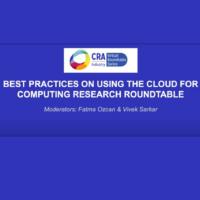Best Practices for Hiring Teaching Faculty in Research Computing Departments
Best Practices for Hiring Teaching Faculty in Research Computing Departments By Jennifer Campbell (University of Toronto), Mark Floryan (University of Virginia), Geoffrey Herman (University of Illinois Urbana-Champaign), Michael Hilton (Carnegie Mellon University), and Jérémie Lumbroso (University of Pennsylvania) Executive Summary The rising demand for computing degree programs has led to a rapid increase in teaching […]


